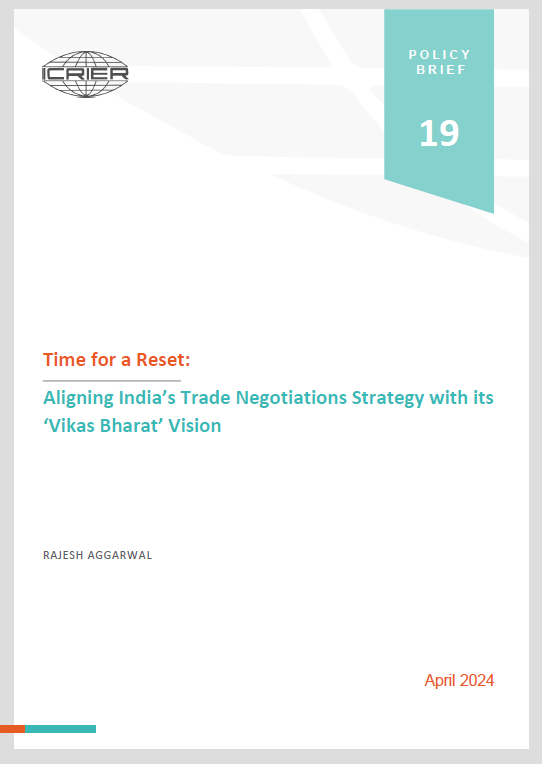
Policy Brief No. 15 | September 2023
In a somewhat concerning development on macro-economic front, retail inflation, measured by the year-on-year (YoY) Consumer Price Index (CPI) remains above the Reserve Bank of India’s (RBI) upper tolerance ceiling of 6 percent (4+/- 2 percent), at 6.83 percent in August 2023. In the last month, retail inflation had surged to 7.44 percent. The recent inflation is largely because of the impact of rising food prices, contributing 57.41 percent in August CPI inflation. Since food and beverages carry 45.9 percent weight in the CPI basket (food items alone accounts for 39.05 percent), the highest in any G20 countries, managing food prices becomes critical for taming retail inflation. Furthermore, this year there are growing apprehensions related to the possible negative impact of El Niño on food production and thereby on food prices.
The rainfall data from the India Meteorological Department (IMD) on the exceptionally dry conditions in August, the driest recorded since 1901, have contributed to a negative deviation in rainfall for the ongoing monsoon season (cumulative rainfall from June 1st to September 12th of this year) at 10 percent. This level of deviation, if it continues till September end, falls within the IMD’s categorization of a “drought.” RBI’s projection for CPI inflation at 5.3 percent, for the Fiscal Year 2023-24 (FY24), is under assumption of normal rainfall. Given the rainfall deficit, CPI inflation will likely breach that projection. In this context, we try to understand how in these conditions Indian policy makers can contain inflation below 6 percent, if not 4 percent.








